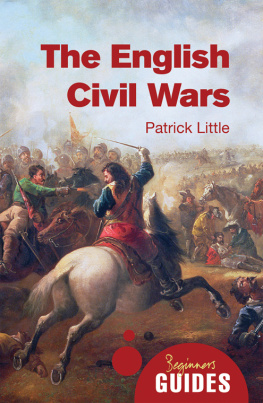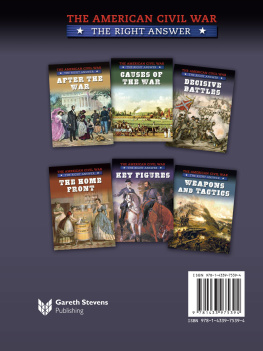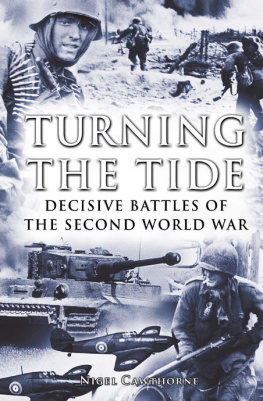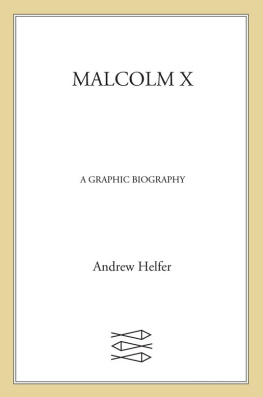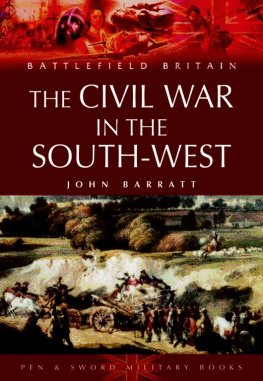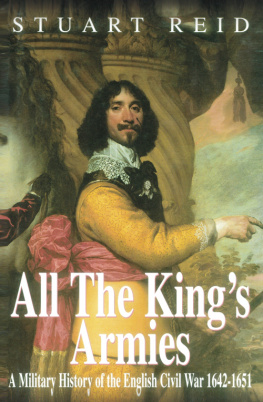Decisive Battles of the
English Civil Wars
Decisive Battles of the
English Civil Wars
Myth and Reality
Malcolm Wanklyn

Pen & Sword
MILITARY
First published in Great Britain in 2006 by
Pen & Sword Military
an imprint of
Pen & Sword Books Ltd
47 Church Street
Barnsley South
Yorkshire
S70 2AS
Copyright Malcolm Wanklyn 2006
ISBN: 1-84415-454-8
ISBN: 978-1-84415-454-8
The right of Malcolm Wanklyn to be identified
as Author of this Work has been asserted by
him in accordance with the Copyright, Designs
and Patents Act 1988.
A CIP catalogue record for this book is
available from the British Library.
All rights reserved. No part of this book may be reproduced or transmitted in
any form or by any means, electronic or mechanical including photocopying,
recording or by any information storage and retrieval system, without
permission from the Publisher in writing.
Typeset in 11/13pt Ehrhardt by Concept, Huddersfield
Printed and bound in Great Britain by Biddies Ltd, Kings Lynn, Norfolk
Pen & Sword Books Ltd incorporates the imprints of Pen & Sword Aviation,
Pen & Sword Maritime, Pen & Sword Military, Wharncliffe Local History,
Pen & Sword Select, Pen and Sword Military Classics and Leo Cooper.
For a complete list of Pen & Sword titles please contact
Pen & Sword Books Limited
47 Church Street, Barnsley, South Yorkshire, S70 2AS, England
E-mail: enquiries@pen-and-sword.co.uk
Website: www.pen-and-sword.co.uk
Contents
Plates
(between pages 118 and 119)
This is the second of three books that focus on various aspects of the military history of the wars fought in Britain and Ireland in the middle years of the seventeenth century. The first, A Military History of the English Civil War 16421646: Strategy and Tactics, co-authored with Frank Jones and published by Pearson/Longman in 2004, concentrated overwhelmingly on removing a hundred years of historians concretions from the strategic narrative of the English Civil Wars. The third, The Warring Generals, to be published by Yale University Press in 2007, will endeavour to assess the experience of generalship in the various British wars of 164251, and also the personal and collective responsibility of the army commanders for the wars outcomes. This book will examine the way in which historians have written about the battles of the English Civil Wars in the context of recent anti-Modernist doubts concerning the feasibility of reconstructing what happened in past time. However, it is not a postmodernist text. Indeed, an underlying theme is that the claim that the study of History cannot produce factual information about what happened in the past is a fallacious one. Nevertheless, some of the terms and concepts used in the more accessible postmodernist texts, and some of the insights they contain, are of value in shedding a harsh but necessary light on the ways in which military historians practise their craft.
Chapter 1 justifies the choice of the battles, and explains why accurate narratives of battles are essential if the significance of the purely military explanations of how the wars ended as they did are to be adequately evaluated. Chapter 2 discusses in general terms the problems involved in constructing accurate battle narratives from the various types of primary source material military historians use. Chapter 3 examines the potential pitfalls facing historians who write about seventeenth-century warfare, and proposes ways in which narratives of what happened on the Civil War battlefield can be improved.
In the main section of the book seven decisive battles are discussed with two chapters being devoted to each battle. The first chapter places the battle in its exact historical context, deconstructs the sources for the battle, and attempts to reconstruct and repopulate the landscape over which it was fought. The second comprises a narrative of the battle written in accordance with the procedures and protocols set down in Chapter 3. The concluding chapter re-emphasizes the hypothetical nature of narratives of the seven battles. It also suggests some changes in military doctrine which took place during the English Civil Wars and which help to determine their outcome.
I would like to thank my colleagues John Benson and John Buckley for reading various chapters; my university and the British Academy for providing the financial support without which visits to distant archives and distant battlefields would have been impossible; Rupert Harding for his very sound editorial advice and Susan Milligan for copy-editing; the staff of the Libraries and Record Offices I have visited for their assistance; the City Campus Learning Centre, Wolverhampton University, for giving permission to include de Gommes sketch of the deployment of the Royalist army at Naseby (Plate 16) from their copy of Volume 3 of E.G.B. Warburtons Memoirs of Prince Rupert and the Cavaliers, the Shropshire Record Office and the Berkshire Record Office for allowing brief extracts from their archives to be used in a similar manner (Plate 11 and 13 respectively); English Heritage for permission to include our photograph of the gatehouse at Donnington Castle; Mr Charles Flynn of Hinton Ampner; and friends inside and outside the university who have kept up my spirits during the year 2005, most particularly Mike Dennis, Patrick McGraghan, Toby McLeod, Roger Page, Jim Quinn, Charles Singleton, and the happy band of colleagues with whom I share office space George, Glyn, Martin and Tony. Finally, I thank my wife Jean for employing her photographic skills on my behalf, and Matt Rogers for drawing the maps.
The central question of the 1640s frequently ignored or marginalized by historians is why Parliament won the Great Civil War of 16426 and the Second Civil War of 16489. Attempts to answer the question tend to be strongly determinist in nature, stressing the overwhelming preponderance of resources that Parliament enjoyed over the forces that supported the king. The argument that lack of resources made it inevitable that Charles I would lose the First Civil War once the campaigns of 1642 and 1643 had ended indecisively has been challenged elsewhere, and combined with a plea for the more purely military explanations to be re-examined. In A Military History of the English Civil War Frank Jones and I developed a revised narrative focusing on how strategic decisions influenced the ebb and flow of the fighting in the First Civil War.
Neither Wanklyn and Jones nor Carpenter paid much attention to the battles, but in the last resort it is how military force was used in the decisive engagements that ultimately decided which side won the war. This book will therefore focus on those battles that constitute significant turning points in the Civil Wars. But why is a new set of battlefield histories needed after so many have been written over the past 120 years, beginning with S.R. Gardiners History of the Great Civil War? The answer is not that major new sources have emerged, but rather that the methodologies employed by most of the authors for most of the time have produced narratives of campaigns that are unsatisfactory in a number of ways. In particular what has been written about what happened on the battlefield is often questionable at best, and sometimes erroneous. In addition, discussion of the landscape over which the battles were fought is often perfunctory and sometimes wrong-headed.



